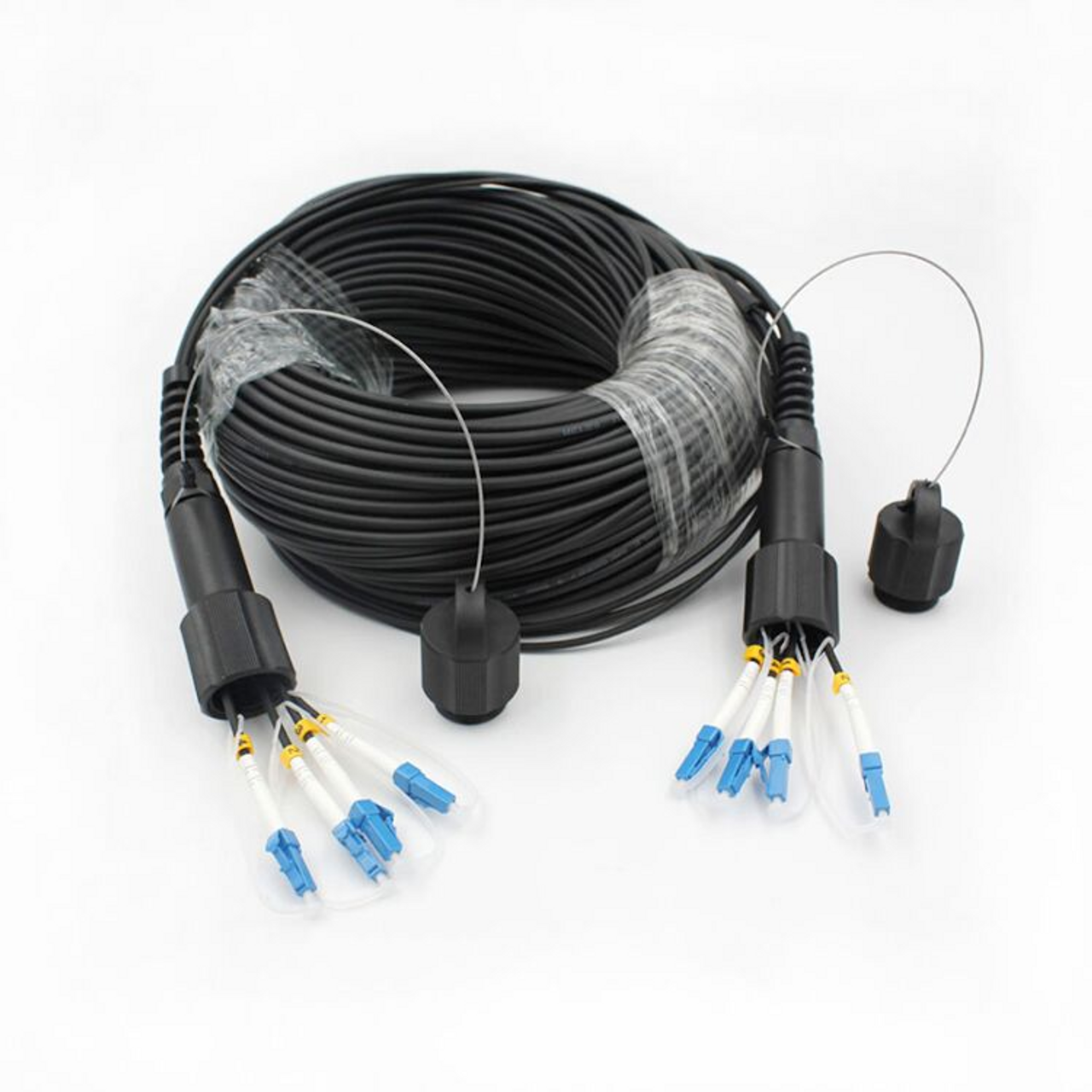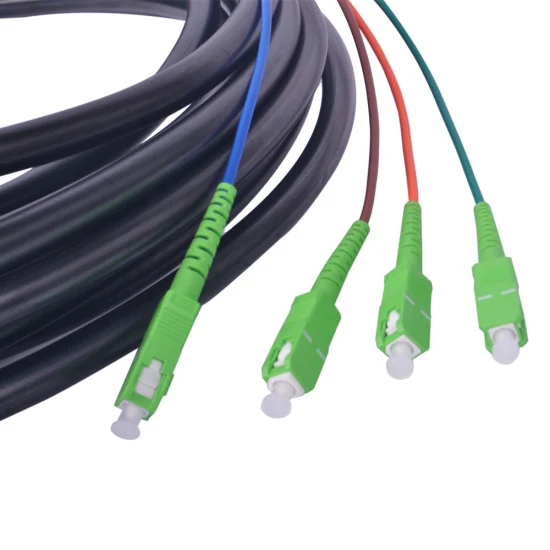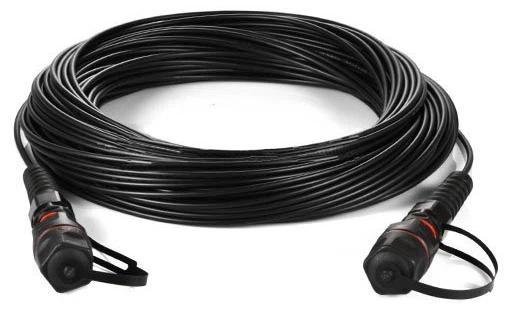The Ultimate Guide to Waterproof Fiber Patch Cable for Outdoor Networking

Understanding Waterproof Fiber Patch Cables
Benefits of Waterproof Fiber Patch Cables for Outdoor Networking
Waterproof fiber patch cables offer unparalleled protection against moisture and environmental elements, making them ideal for outdoor networking applications. These cables ensure reliable connectivity in harsh weather conditions, preventing signal loss and maintaining consistent performance. Additionally, they provide enhanced durability, reducing the risk of cable damage and the need for frequent replacements.
Best Practices for Outdoor Fiber Optic Cable Installation
When installing outdoor fiber optic cables, it's crucial to follow best practices to ensure optimal performance and longevity. This includes using weatherproof connectors, implementing proper cable management techniques, and adhering to industry standards for outdoor installations. By employing these best practices, network operators can mitigate potential issues related to exposure to outdoor elements.
Advantages of Fanout Type Fiber Patch Cables for Outdoor Networking
Fanout type fiber patch cables are particularly advantageous for outdoor networking due to their rugged construction and enhanced flexibility. These cables enable efficient cable routing in outdoor environments, offering greater versatility and adaptability in challenging conditions. With their robust design and high-performance capabilities, fanout type fiber patch cables are well-suited for demanding outdoor networking applications.
Advantages in Outdoor Networking
Reliability in Harsh Conditions
When it comes to outdoor networking, waterproof fiber patch cables play a crucial role in ensuring reliability, especially in harsh environmental conditions. These cables demonstrate exceptional durability, with the ability to withstand extreme weather such as heavy rain, snow, and high humidity. By effectively repelling moisture and resisting environmental elements, water-resistant fiber patch cables significantly reduce the risk of signal loss and ensure consistent connectivity even in the most challenging outdoor settings.
In addition to their resilience against harsh conditions, these cables are designed to maintain signal integrity over long distances. This makes them highly reliable for outdoor networking applications where consistent data transmission is essential for operations and communications.

Enhanced Performance
The utilization of weatherproof fiber patch cables contributes significantly to the enhanced performance of outdoor networking systems. These cables are engineered to uphold high-speed data transmission, ensuring that critical information reaches its destination without any compromise in speed or quality. By maintaining reliable connectivity and minimizing signal interference, outdoor fiber optic cables actively contribute to the overall efficiency of outdoor networking applications.
Moreover, their robust construction and protective features enable them to perform optimally even in demanding outdoor environments where conventional cables may struggle to deliver consistent performance.
Efficient Installation Techniques
Proper Cable Routing
When it comes to outdoor fiber optic installations, proper cable routing is essential for ensuring optimal performance and longevity of the network. Strategic cable routing helps minimize potential damage and signal interference, thereby maintaining consistent connectivity in outdoor environments. By carefully planning the pathway of the cables and securing them away from potential hazards, such as sharp edges or extreme weather conditions, network operators can significantly reduce the risk of cable damage and signal degradation.
Best practices for proper cable routing include utilizing protective conduits or ducts to shield the cables from environmental elements and physical harm. Additionally, employing cable management accessories such as clamps and ties ensures that the cables are neatly organized and secured along their designated routes. This not only enhances the aesthetic appeal of the installation but also facilitates easier maintenance and troubleshooting in the future.
By adhering to effective cable routing techniques, outdoor fiber optic networks can maintain reliable connectivity and minimize disruptions due to accidental damage or environmental factors.
Weatherproofing Connectors
Weatherproofing connectors is a critical aspect of outdoor cable installation to maintain signal integrity and prevent potential downtime. Techniques for waterproofing fiber optic connectors involve utilizing specialized sealing materials and protective enclosures that shield the connectors from moisture and other environmental hazards. This ensures that the connections remain secure and free from corrosion or signal loss caused by exposure to outdoor elements.
Network operators can employ techniques such as using sealant tapes, gels, or heat-shrink tubing to create a protective barrier around the connectors, safeguarding them against water ingress. Additionally, utilizing weatherproof enclosures for splices and terminations provides an extra layer of protection against harsh outdoor conditions.
By implementing thorough weatherproofing techniques for connectors, outdoor networking installations can maintain reliable connectivity even in challenging environmental settings.
Ensuring Optimal Connectivity
Regular Maintenance Practices
Sustaining optimal connectivity in outdoor fiber optic networks necessitates regular maintenance practices to uphold consistent performance and longevity of connections. Routine inspections and cleaning procedures are imperative to identify and address any potential issues that may arise due to environmental exposure or wear over time. Additionally, proactive measures such as monitoring signal strength and evaluating network stability enable early detection of any anomalies, allowing for timely intervention to prevent connectivity disruptions.
Furthermore, scheduled equipment checks and component replacements help mitigate the risk of unexpected failures, ensuring uninterrupted service delivery. By adhering to a structured maintenance regimen, network operators can uphold the reliability of outdoor fiber optic networks, minimizing downtime and preserving operational efficiency.

Future-Proofing Networks
Future-proofing outdoor fiber networks involves adopting scalable solutions to accommodate evolving networking requirements. This includes integrating advanced technologies such as multi-fiber breakout cables and distribution fiber optic cables that facilitate seamless expansion and increased capacity. Additionally, the utilization of splitter fiber patch cables enables efficient network segmentation, enhancing flexibility and adaptability to future network demands.
By embracing scalable infrastructure and innovative solutions, outdoor fiber networks can effectively adapt to emerging technologies and evolving connectivity needs, ensuring sustained resilience and performance in the face of changing demands.
The Future of Outdoor Networking
Evolving Connectivity Landscape
As technology continues to advance, the significance of waterproof fiber patch cables in outdoor networking is poised to grow even further. The demand for reliable and resilient connectivity in outdoor environments drives ongoing innovations in outdoor fiber optic technology. Network operators and infrastructure providers are continually exploring new solutions to meet the evolving needs of outdoor networking applications.
Embracing Emerging Trends
Staying updated with emerging trends is vital for ensuring the effectiveness and efficiency of outdoor networking solutions. From advancements in weatherproof fiber patch cables to the integration of smart connectivity features, keeping pace with the latest developments allows organizations to leverage cutting-edge technologies for their outdoor networking requirements.
Key Considerations for Outdoor Networking
As outdoor networking continues to evolve, it's essential for stakeholders to consider factors such as scalability, adaptability, and future-proofing capabilities. This involves evaluating the potential of outdoor fiber optic cables that can seamlessly accommodate increasing bandwidth demands and support diverse connectivity requirements.
Collaboration and Integration
The future of outdoor networking also involves increased collaboration between different sectors, including telecommunications, infrastructure development, and smart city initiatives. Integration of water-resistant fiber patch cables with other critical infrastructure components enables comprehensive solutions that cater to a wide range of outdoor connectivity needs.
Adapting to Changing Demands
With continuous advancements in technology, organizations must remain agile and adaptable to embrace emerging trends effectively. This includes leveraging versatile weatherproof fiber patch cable solutions that can withstand dynamic environmental conditions while delivering consistent performance across various outdoor networking applications.
See Also
Exploring the Differences Between Single Jacket and Dual Jacket Outdoor Optical Cables
2024 Comparison of FBT vs PLC Splitters: Signal Distribution Performance
Unveiling the Wonders of Preconnectorized Cables for Indoor and Outdoor Cable Structure
About US
Follow Us
AnetFiber company's main products are indoor and outdoor optical fiber cables, outdoor waterproof pre-connected fiber-to-the-home products, PLC optical fiber splitters, optical fiber jumpers and pigtails, MTP®/MPO high-density big data product solutions, optical fiber field quick connectors and research and development molding, injection molding and production of optical fiber distribution boxes, optical fiber chassis cabinets, the market has expanded to the world, Europe, America, Asia, the Middle East and Latin America.
Address
Shenzhen City, Baoan District, Yanluo Street, Tangxiayong Community, Yangyong Industrial Road, Tonggangda New Energy Vehicle Park 406
Contacts
+86 199 2655 3586

